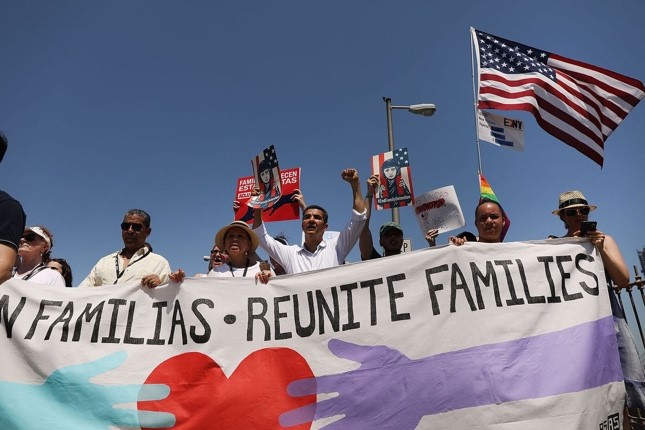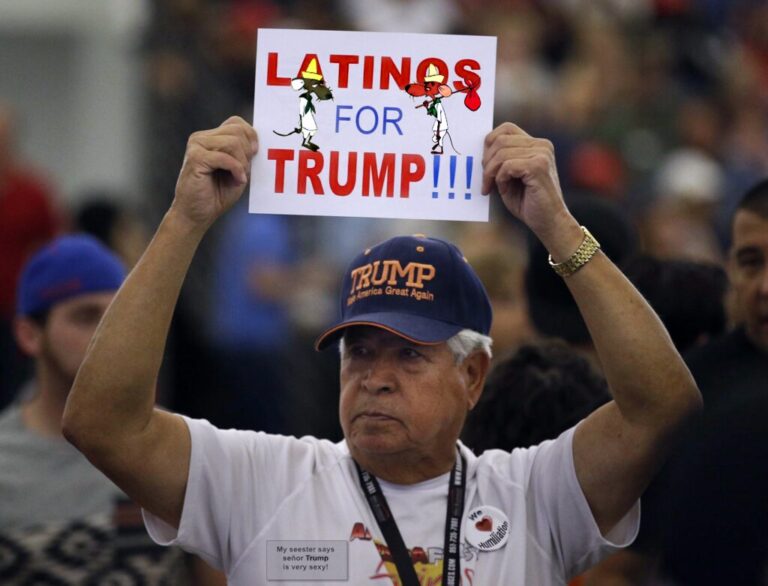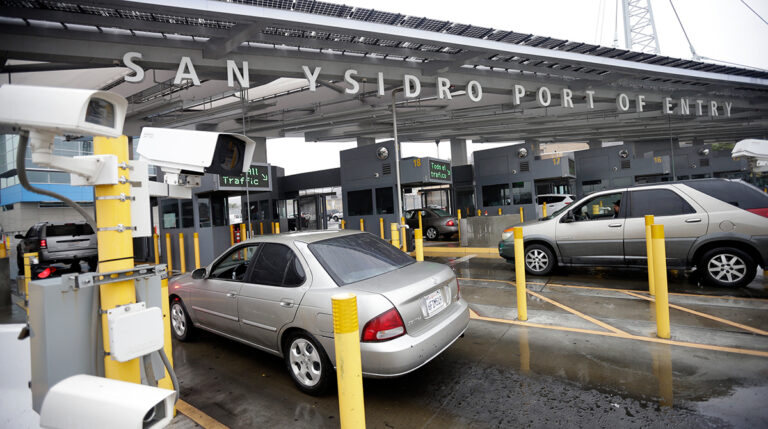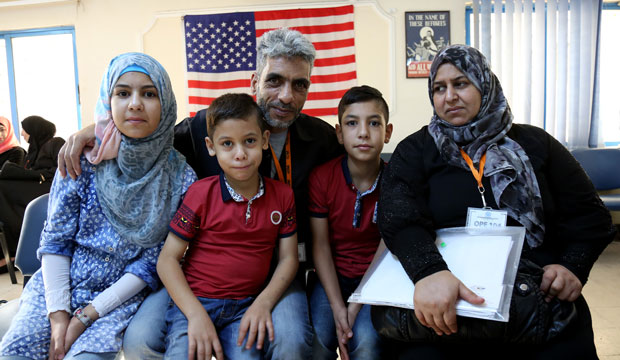All content categorized with: Immigration
Filter
Post List

A Reexamination of America’s Mexican Immigration Policy
By Juan MoraAssociate Editor, Vol. 26 After another United States presidential election, the resounding clash over the problem of Mexican immigration continues. President Trump won the 2016 presidential election largely centered on his hard stance on immigration, an anchoring issue that was vital to his agenda. No one…Jail By Another Name: ICE Detention of Immigrant Criminal Defendants on Pretrial Release
This Article assesses the legality of an alarming practice: Immigration and Customs Enforcement (ICE) routinely detains noncitizen criminal defendants soon after they have been released on bail, depriving them of their court-ordered freedom. Since the District of Oregon’s decision in United States v. Trujillo-Alvarez, 900 F. Supp. 2d 1167 (D. Or. 2012), a growing group of federal courts has held that when ICE detains federal criminal defendants released under the Bail Reform Act (BRA), it violates their BRA rights. These courts have ordered that the government either free the defendants from ICE custody or dismiss their criminal charges. This Article agrees with and expands on this interpretation of the BRA. Focusing on the BRA’s plain text and legislative history, it argues that the BRA confers a “right to remain released” pending trial, which ICE detention infringes. It then debunks the leading counterarguments to this BRA interpretation. It also explores constitutional arguments for the right to remain released and their implications for federal and state criminal defendants.
Updates on the Separation and Reunification of Families at the Border
by Edith Lerner Associate Editor, Vol. 25 It might seem odd for me to be writing a blog post about family separation in February 2020. For many Americans, the “family separation crisis” defined the summer of 2018. It was more than just one of the many outrage provoking…
A.G. Further Restricts Asylum Seekers: Family-Based Asylum Claims Now Reserved for “Families of Societal Import”
By Edith Lerner Associate Editor, Vol. 25 Attorney General William Barr About one year ago, our editor Samantha Kulhanek wrote a blog post called How Jeff Sessions is Quietly Transforming Immigration Law to Promote His Anti-Immigrant Agenda. In it, she describes a growing trend during Session’s tenure…
How Discussions of Latinos in the Legal System Omit Racism within Latino Communities
by Miguel Medina Associate Editor, Vol. 25 The Trump Administration has weaponized immigration policy in an attempt to appeal to its voter base. In the process, immigration has been thrust to the forefront of American political discourse. For some, seeing immigrant children in U.S. concentration camps is new…
It Is Not Illegal to Seek Asylum: An Analysis of the New Migrant Protection Protocols
By Sam Kulhanek Associate Editor, Vol. 24 In line with the Trump Administration’s recent efforts to restrict the right to seek asylum, the Department of Homeland Security (“DHS”) appears to be keeping its December promise to return certain asylum seekers to Mexico during the pendency of their immigration proceedings. Labeled as the “Migrant Protection Protocols,” these new guidelines represent a dramatic departure from current policy, which permits asylum seekers to remain in the U.S. while their claims are adjudicated.[1] Promulgated under the premise that there is a “security and humanitarian crisis on the Southern border,” these new Protocols jeopardize the rights of migrants to seek asylum and safety in the U.S. and raise questions about U.S. compliance with domestic and international law.[2]
Repatriation and Restitution Required: Renovation of Belgium’s Royal Museum for Central Africa Falls Short
By Meredith Reynolds Associate Editor, Vol. 24 In December 2018, Belgium’s Royal Museum for Central Africa re-opened after a five-year renovation project.[1] The Royal Museum was originally created by Belgium’s King Leopold II in 1897 as a place for him to show off his colonial exploits.[2] The recent renovation aimed to transform the Royal Museum’s image as a monument to imperial conquest by adding contextualizing descriptions of Leopold’s brutality and incorporating some modern Congolese art.[3] Yet, it re-opened amid protests over its continued display of artifacts stolen from the region and its failure to erect a monument for the seven Congolese individuals who passed away after they were put on display at the museum.[4] As long as Belgium continues to claim ownership of stolen artifacts and reap the financial benefits of a museum with a more than one-hundred-year history of racist exploitation, its renovations cannot be considered truly transformative.
Does it Hurt to Ask? Citizenship Question Proposed for 2020 Census Faces Legal Challenges
By Rose Lapp Associate Editor, Vol. 24 Congress is granted the power to carry out the census by Article 1, Section 2 of the Constitution, which reads: “The actual Enumeration shall be made within three Years after the first Meeting of the Congress of the United States, and within every subsequent Term of ten Years, in such Manner as they shall by Law direct.”[1] The responsibility of administering the census lies with the Secretary of Commerce. The census has not included a question about citizenship since 1950.[2] However, in March of 2018, Commerce Secretary Wilbur Ross announced that the 2020 Census would include the question “Is this person a citizen of the United States?”[3] This announcement was met with both great support and great outrage. President Trump’s 2020 reelection campaign sent an email endorsing the proposed change, stating that “The President wants the 2020 United States Census to ask people whether they are citizens. In another era, this would be COMMON SENSE.”[4] Civil rights groups, however, banded together almost instantaneously to bring lawsuits in New York, California and elsewhere, aimed at obtaining an injunction to prevent the question’s inclusion.[5]
Trump’s Efforts to Deport People Back to “Sh**hole” Countries Stalled by Equal Protection Clause
By Kerry Martin Associate Editor, Vol. 24 How racist can the President of the United States be in determining immigration policy before he violates the Equal Protection Clause? A lot depends on who the target is—and with recipients of temporary protected status, Trump may have picked on the wrong people. Donald Trump announced his candidacy with anti-Latino animus (“When Mexico sends its people…”)[1] and has not backed down since entering the White House. In response to allegations of crime by Central American immigrants on Long Island, President Trump remarked: “They come from Central America. They’re tougher than any people you’ve ever met. They’re killing and raping everybody out there.”[2] Of Haitians, Trump said they “all have AIDS”[3] and asked, “why do we need more Haitians?”[4] And in response to an immigration proposal that would have included protections for Salvadorans, Haitians, and some Africans, Trump inquired, “Why are we having all these people from shithole countries come here?”[5] This racial animus seems inextricable from every immigration policy decision made by the Trump Administration, from ramping up internal enforcement and border protection, to pushing for legislation that would curb “chain migration” and fund a border wall. But it has proven difficult, at least for purposes of stating a legal claim, to tie these broad-sweeping policy choices to Trump’s racist statements, even if “[e]veryone knows”[6] that the two are related.Distant Voices Then and Now: The Impact of Isolation on the Courtroom Narratives of Slave Ship Captives and Asylum Seekers
Part I compares the nineteenth century cases of the Antelope and the Amistad to identify why they resulted in different outcomes despite having similar fact patterns. The Antelope concerned the fate of approximately 280 African captives discovered on a slave trade ship upon its interception by a U.S. revenue cutter. Since the slave trade in the United States was illegal at the time, the captives were transported to Savannah for trial through which their status—free or slave—would be determined. After a lengthy trial and appeals process in which Spain and Portugal laid claim to the captives, the Supreme Court determined that those captives claimed by a non-U.S. nation were slaves. The Court reasons that however “abhorrent” the slave trade was, the United States was obligated to recognize the rights of other nations to participate in it. In comparison, the Amistad concerned the fate of captives aboard a slave trade ship in which the captives committed mutiny, attempted to sail to Africa, but were captured by a U.S. vessel. The Supreme Court ordered them free despite the Spanish government’s claim that the captives were its property. Part I explores these different outcomes and argues that the absence of Antelope captives’ stories in the litigation process was partly due to the decision to isolate captives in slavery before their status was determined. In particular, it argues that this isolation affected the outcome of the Antelope by preventing captives from sharing their anecdotes and translating them to a format that would resonate with their legal counsel, the public, and judges. In contrast, the Amistad captives, while also detained, were situated close to those who could help them. They were able to transform their truths into a winning narrative for the court by understanding and leveraging the talents and expertise of counsel, and the biases of judges and the public. Part II argues that 200 years later, a similar environment of isolation suppresses the stories of another group with undetermined legal status: asylum seekers. Although slave ship captives were forced into the country with chains, while asylum seekers are driven into the country by fear, the legal status of both groups in their respective time periods was undetermined upon their arrival. Both groups deserved, by legal and moral standards, the opportunity to present the truth behind their arrival and to prove their legal status. Part II argues that the detention of asylum seekers mirrors the isolation of the Antelope captives by removing detainees from those most able to help them develop a persuasive narrative truth. Detention silences important voices, aggravates ineffective representation, damages public perception, and ultimately harms case outcomes.







